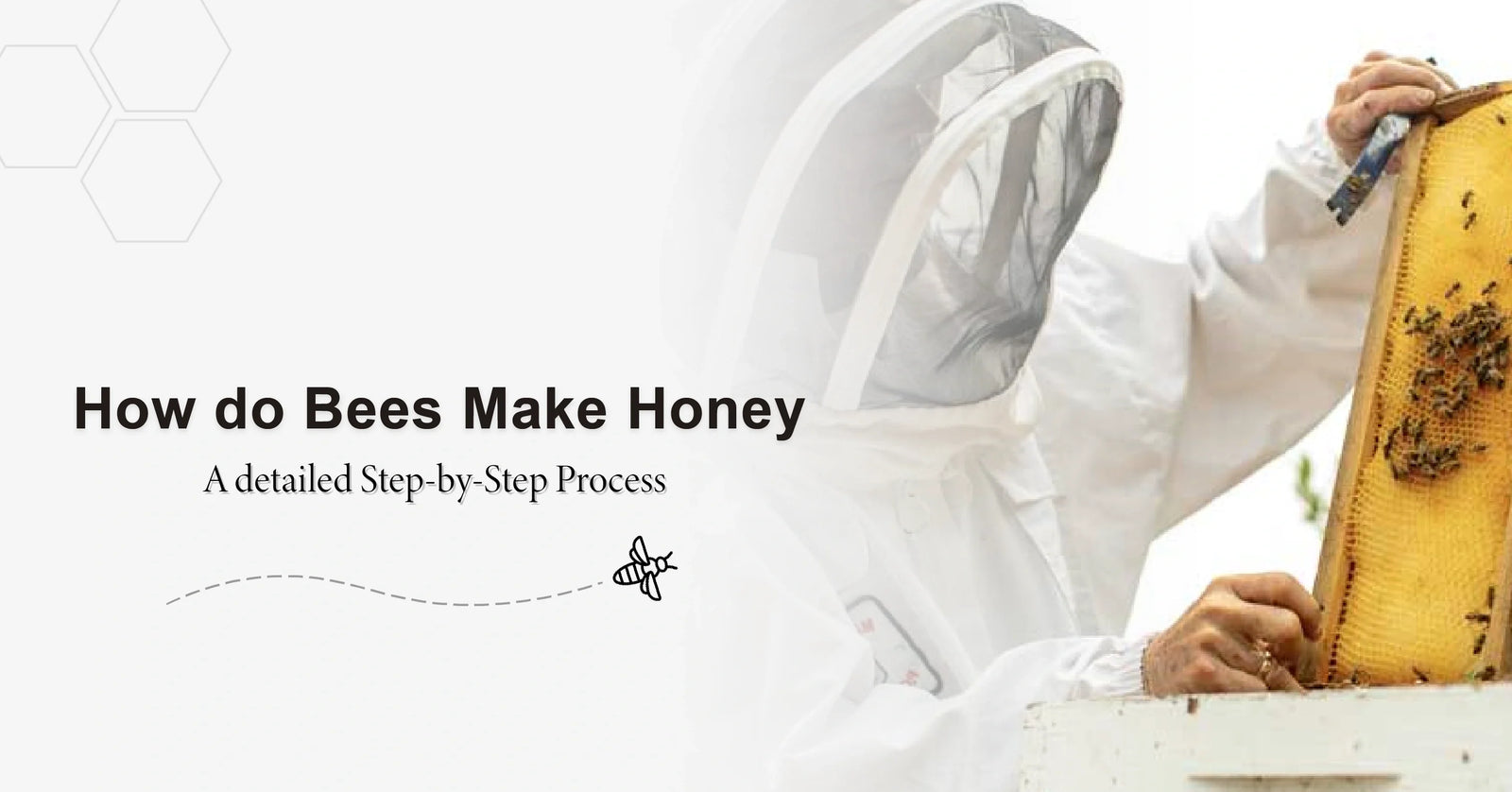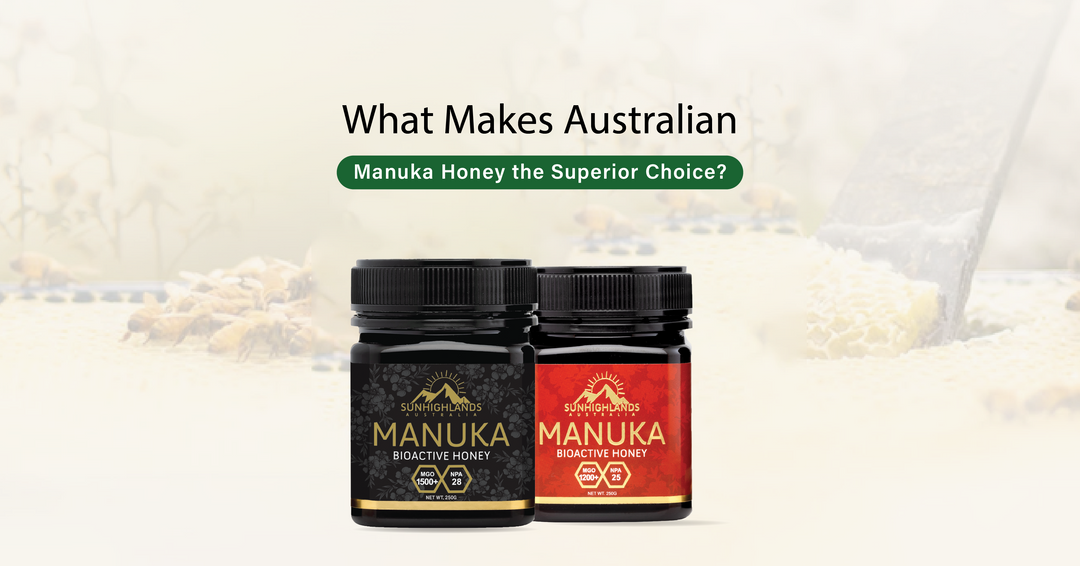Why and How Do Bees Make Honey? A Detailed Step-by-Step Process

Bees, tiny yet mighty creatures, are not just the world’s most important pollinators but also the architects of nature’s most cherished gift: honey. The journey from flower nectar to the golden syrup on your toast is fascinating. So, let’s dive into the remarkable honey-making process and uncover why bees go to such lengths to produce this sweet, sticky elixir.
Bees are small yet vital little creatures known for their honey-burning skills. But have you ever thought about why and how they do it? Honey is produced so that bees have a food source to return to in winter when flowers have wilted. In this blog, we’ll discuss the quick and easy steps for how bees make honey and why they do it. It’s a great process from flower to hive that allows bees to survive the winter!
Why Do Bees Make Honey?
Bees make honey to survive. They require food to stay strong and healthy, particularly in winter. In spring and summer, flowers bloom and create nectar, a sweet liquid that bees collect. But in winter, we have no flowers. So, bees need a method to save food for the cold months. Honey is their answer. It is a sugary liquid that gives bees energy when flowers are scarce.
Steps of Making Honey in Simple Words
Here’s a basic rundown of the process by which bees create honey
- If you think about it, bees' long tongues collect the nectar of flowers.
- They collect it in their honey stomachs and head back to the hive.
- Bees transfer the nectar to fellow bees and mix it with enzymes to help digest the sugar.
- The bees then fan their wings to evaporate the water from the nectar.
- The nectar then thickens into honey, stored in waxen cells.
How Do Bees Make Honey?
Now, let’s see how bees make honey. The process is incredible, and there are several steps. Let’s break it down:
The process involves several steps, from foraging for nectar to carefully storing the honey in waxy cells. Along the way, bees perform a sort of natural alchemy, transforming simple flower nectar into a substance with antibacterial properties and incredible nutritional value. Let’s explore this process in detail:
Step 1: The Foraging Mission Begins
The honey-making journey starts with the worker bees, sometimes called foraging bees. These industrious bees leave the hive in search of flowers. They’re drawn to blooms by their vibrant colours and enticing scents.
Once they find the perfect flower, they use their proboscis—a tube-like structure—to sip the nectar. This nectar is stored in a special part of the bee’s body called the honey stomach, separate from their regular stomach. The process of collecting nectar is known as foraging.
Collecting Nectar
Bees first collect nectar from flowers. The long tongues of bees function as proboscises, which they use to draw liquid nectar from flowers. The bee uses its "honey stomach" to keep liquid nectar distinct from standard digestive contents. Bees can carry nectar back to the hive using its unique storage compartment.
Step 2: Enzymatic Magic in the Honey Stomach
The real magic begins once the nectar is in the honey's stomach. The bee adds enzymes to the nectar, initiating a chemical transformation. These enzymes break down the complex sugars in nectar into simpler sugars, such as glucose and fructose.
With their honey stomachs full, the worker bees head back to the hive, passing the nectar to house bees through a process called trophallaxis—a mouth-to-mouth transfer.
Returning to the Hive
Bee stops its nectar-gathering mission once it reaches the desired amount of nectar before flying home. The bee gives the nectar from another hive bee for transfer to hive storage. The nectar receives its conversion into honey by this bee.
Step 3: Reducing Moisture Content to Thicken the Honey
Now that the nectar has been partially processed, it must lose some water content to transform into honey. Fresh nectar contains about 70-80% water, which must be reduced to around 20% to achieve the thick, syrupy consistency we know as honey.
The bees deposit the nectar into hexagonal beeswax cells and start the process of evaporation. They fan their wings vigorously to maintain airflow within the hive, speeding up evaporation. Over time, the nectar becomes thick and syrupy, resembling honey.
Transforming Nectar into Honey
The second bee chews on the nectar and adds special enzymes from its saliva. These enzymes aid in digesting the sugars contained in the nectar. This makes the nectar
thicker and sweeter. It is also vital in converting nectar to honey. After mixing the nectar with enzymes, the bee then spits the liquid back into the hive.
Step 4: Capping the Cells to Seal the Deal
Once the nectar has been sufficiently dehydrated and turned into honey, the bees seal the wax cell with a thin layer of beeswax. This final step, known as capping, protects the honey from air and moisture, preserving it for future use.
The sealed honey can now be stored for months, even years, serving as a food reserve for the hive when nectar is scarce.
Evaporating the Water
The liquid nectar contains 80% water, which should be less concentrated in honey. Due to their collective effort, bees manage to pull out the superfluous water from the nectar, thus creating thick honey. Wing fanning is how bees achieve water evaporation.
The flapping of their wings facilitates the evaporation of the water in the nectar. During evaporation, the nectar becomes thicker until it assumes the characteristics of honey.
Step 5: The Queen Bee’s Role
While the queen bee doesn’t directly participate in honey production, her role is crucial. The queen’s primary job is to lay eggs, ensuring a steady supply of new workers to keep the hive bustling with activity. A healthy, productive queen means a healthy, productive hive, resulting in more honey.
Storing the Honey
When the nectar has been thickened into honey, the bees store it in the hexagonal wax cells that make up the hive's structure. These wax cells serve as small jars. They will then seal each cell with wax to prevent the honey from going off. The honey will remain in these cells, ready to be consumed during winter without flowers.
What Introduces Variety in Honey?
Not all honey is created equal. Honey's variety is primarily influenced by the type of flowers the bees visit, the geography and climate of the region, and the methods used by beekeepers to extract and process the honey.
For instance, Manuka honey, known for its potent antibacterial properties, has a distinct taste from the Manuka flowers in Australia and New Zealand. Even the Australian and New Zealand versions of Manuka honey have subtle differences due to their unique environments.
Why Do Bees Make Honey?
For bees, honey is much more than just a tasty treat. It’s their main source of sustenance, especially during winter when foraging isn’t possible. Honey provides essential nutrients and energy to help the bees survive tough times. Honey’s antibacterial properties also help maintain the hive's health, protecting it from diseases and infections.
Conclusion
The process of making honey is a testament to bees' incredible teamwork and organisation. From the first sip of nectar to the final sealing of the honeycomb, bees work tirelessly to produce this golden treasure.
They don’t just make honey for themselves; they also create a natural remedy for many human ailments. So, next time you enjoy a spoonful of honey, take a moment to appreciate the remarkable journey to reach your table and perhaps whisper a little "thank you" to those diligent bees.
FAQ’s
How do bees make honey?
Bees gather nectar from blooms, mix it with enzymes, and use their wings to evaporate water. They bring back the nectar, which they transform into honey, which they store in the hive.
Why do bees make honey?
Bees make honey to survive the winter months when flowers are out of bloom. Honey sustains them when there’s no nectar.
Why do bees make honey?
Bees create honey to preserve energy for cold months when blooms are unavailable.





